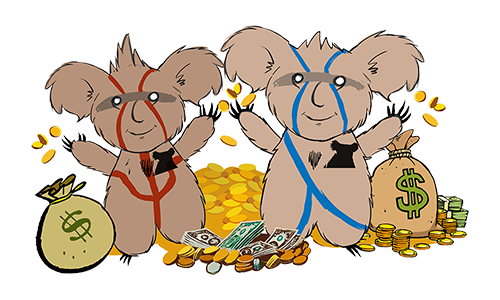Embracing the Economic Opportunity of the Koala
The 1980's and 90's saw Australia's most iconic species, the koala, reach the height of its popularity. This charismatic creature was attracting worldwide attention and quietly generating revenue for Australian businesses, government and nature parks with its friendly disposition, small size, and clean appearance. Tourists flocked to south-east Queensland for the opportunity to touch and hold a koala.
It was the age of the koala and a new industry had emerged.
In western Sydney, the koala's popularity was also on the rise. However, the state government, acting upon bad advice, killed the koala captivity industry in NSW, not realising the jobs, education and opportunities that would be lost. It also meant many lost opportunities for the young residents of Sydney who worked
In the mid to late 90's, self-interest and industry in-fighting began to unravel the koala industry. Non-profit groups surfaced, criticising captive management programs and trying to instigate better welfare practices for koalas. A 'survival of the fittest' mentality began to pervade the industry, as non-profit groups, environmentalists, wildlife park operators and industry staff members bickered and competed, ultimately trying to destroy the captive sector industry, and failing to prioritise the needs of the koala in the long-term.
This was just one of many times that jealousy and bickering between two warring tribes - instigated by ignorance and radical politics– wreaked havoc upon the koala industry which had been educating the population and generating strong revenue and creating jobs.
Instead of consulting with industry experts, non-profit groups took on an elitist attitude, refusing to collaborate and creating an atmosphere of hostility. This hostile interference by non-profit groups, such as the Australian Koala Foundation, led to huge behavioural changes amongst Australians - koalas were framed merely as victims, rather than the robust and complex creatures that they are, and the economy of the industry began to flail. Environmental groups campaigned by playing on the public's emotion, rather than facts, and they isolated themselves from the commercial sector. Instead of propping up the industry by collaborating across sectors and with experts, using koalas to properly educate the community and to raise funds to koala conservation, they tried to cripple the entire koala captivity industry by isolating themselves and creating an 'us-versus-them' attitude between conservationists, activists and captive koala specialists.
On a micro-level, this type of fighting neglected the very people who supported this industry the most. The staff weren't supported; their unique skills were not appreciated and they were not recognised
Some of this can be attributed to
This division hasn't worked. It is more important to collaborate, and understand that our form of work is grounded in fact, reason and years of planning and risk mitigation by people that have worked on-ground with koalas.
We need to create
These types of small steps would allow us to find practical solutions in managing captive koalas in large numbers on both sides of the divide. But, due to the mistrust that has built up over many years, it has been hard to close the gap between the two groups.
We need to find more balance between the two industries, remove the victim-culture surrounding koalas and realise the potential that the koala industry could have to drive jobs and economic development and to support and create long-term conservation outcomes.
Marcus The Koala Man
Koala Retreat

